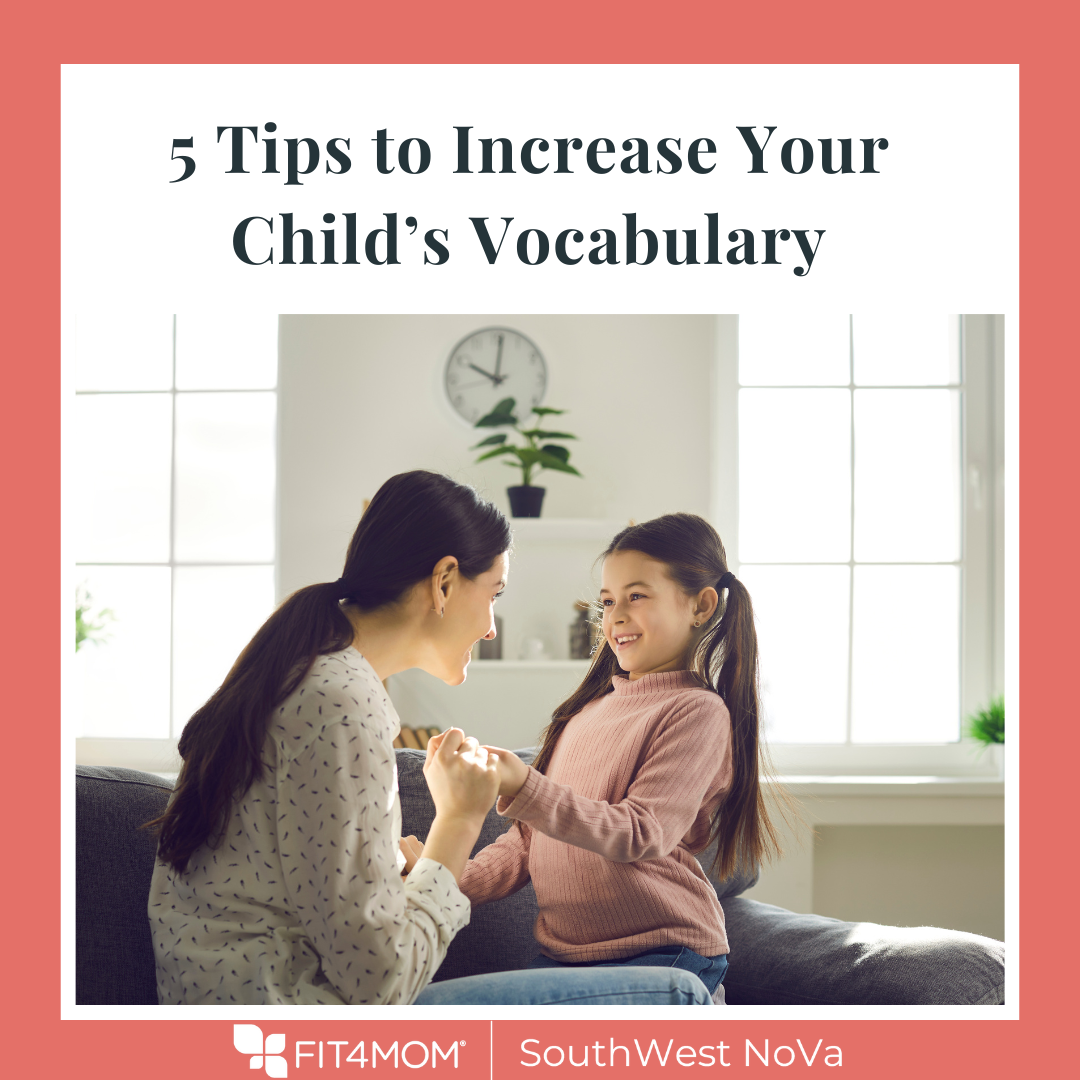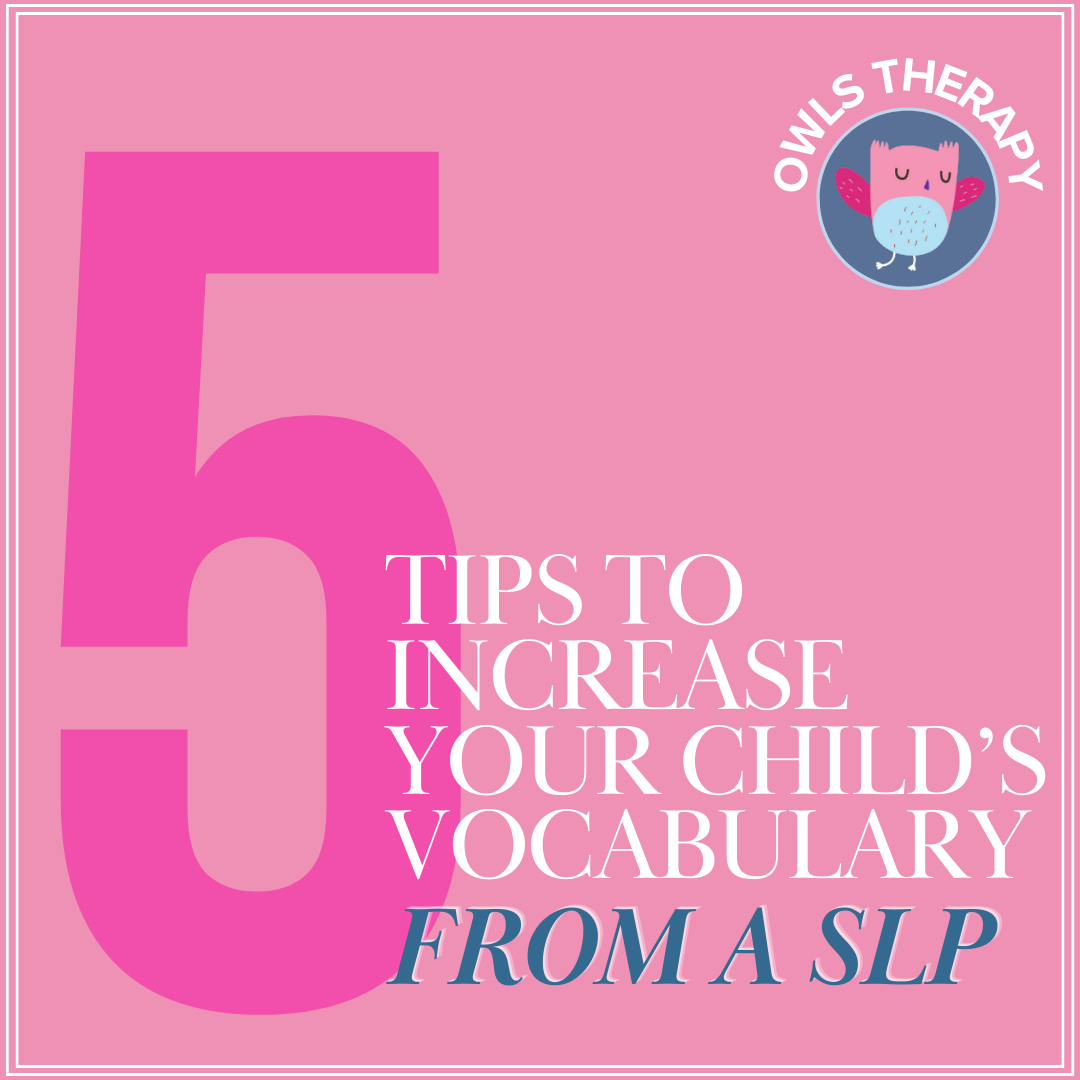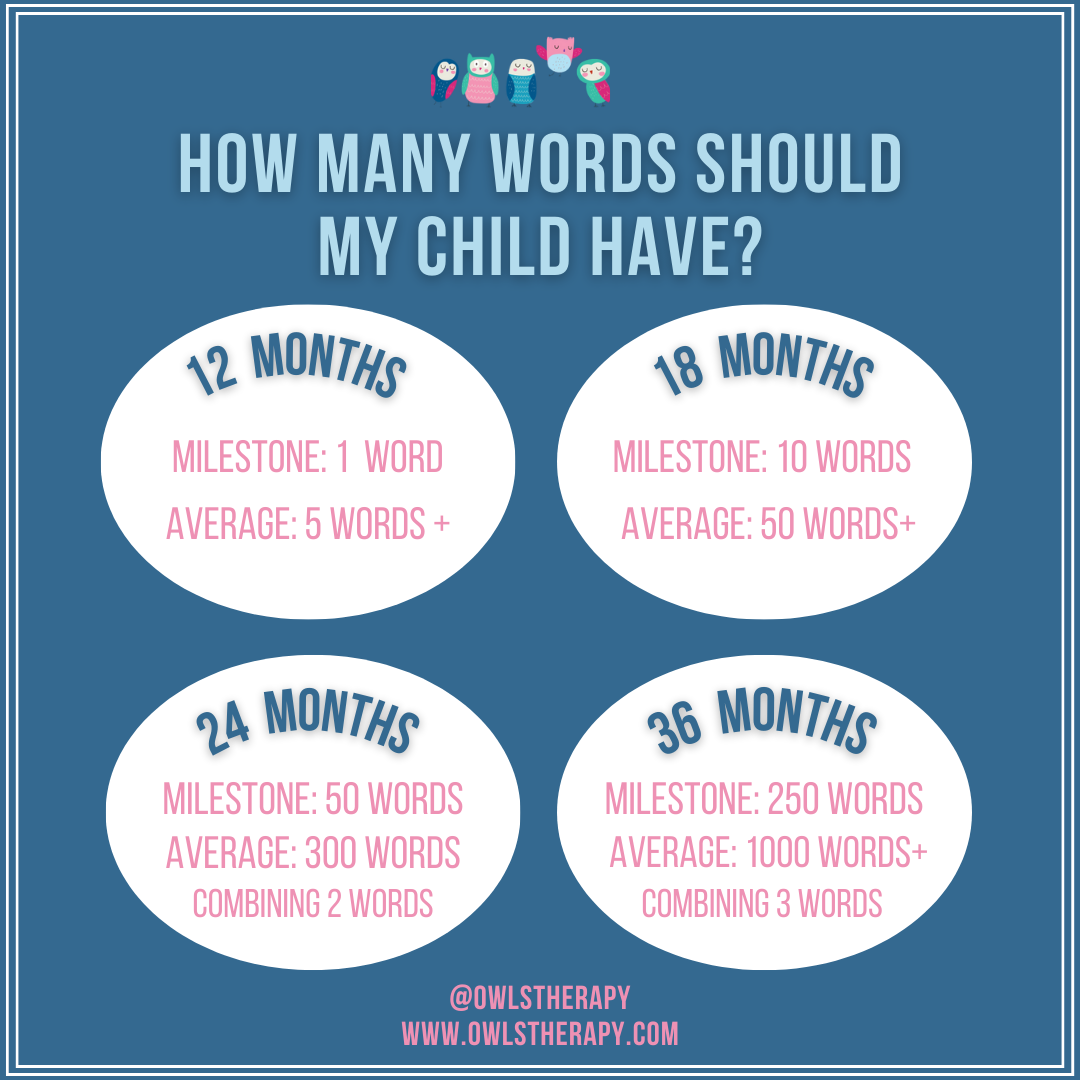
5 Tips to Increase Your Child's Vocabulary from a SLP

Hello! We’re OWLS Therapy, a private speech therapy practice servicing the Northern Virginia area, including Alexandria, Arlington and greater Fairfax County. We provide in-home therapy and also travel to private schools, preschools, and daycares within the area. As speech-language pathologists (SLPs), we are trained within various areas of development, including the following: speech sound production, expressive and receptive language, social pragmatic language, phonological and reading development, feeding skills, fluency, and more! We pride ourselves in offering comprehensive evaluations and evidence based treatment that incorporates clinical expertise, best current evidence, and client values to help your child meet their full potential.
As SLPs, we often field questions related to language development in toddlers and preschoolers. Have you ever wondered if your child has enough words? Or if they’re able to communicate their thoughts, wants, needs and/or feelings effectively? These expressive language skills are related to vocabulary, or the amount of words a child knows. See the chart below for how many words a child should have in their vocabulary with the correlating ages/milestones for each. Of note, a milestone is about what 90% of children are able to do by a certain age and an average is about what 50% of children are able to do by a certain age.

As a child develops, they typically understand more words than they are able to say. For example, a 1-year old may know what a “cup” is. However, while they understand the word, they may not say the word “cup” yet! As their vocabulary develops, they understand and use more words. The more words a child knows, the more information they have access to! Vocabulary helps them engage easier with others and unlocks the world around them. Research has shown that a child’s vocabulary in kindergarten predicts their ability to read. Furthermore, a child’s vocabulary growth is directly linked to their overall school achievement. You can read more about this here.
A child is able to learn a new word by experiencing it in a meaningful context. We know vocabulary is important… but how can we help expand a child’s vocabulary? Keep reading for our top 5 tips on this!
5 Tips on Increasing Vocabulary Development
1. Repeat, Repeat, Repeat
Research has shown that children need to have multiple exposures to targeted vocabulary words (Hadley et al., 2018). This means, the more a child hears a word, the more experiences they will have with it. While engaging with your child, think of a word, or words, that can be repeated several times throughout the activity. For example, bubbles are a wonderful way to engage children. While playing with bubbles, prepare the wand with bubbles. Then, look at your child and say “ready..set…go!” As the bubbles bounce around in the air, your child may begin to pop them. Model what is happening by saying “pop!” when they pop a bubble. Every time they pop a bubble, say “pop!” This is an excellent way to pair a vocabulary word with real-life action. You can repeat this several times, offering your child many exposures and experiences to the vocabulary word “pop.”
2. Self Talk
Self talk simply means to talk about what you’re doing! Narrate your actions by labeling what you’re seeing, touching, doing, or thinking. Self talk exposes your child to a variety of vocabulary terms, including different verbs, adjectives, and feelings. Think of all the thoughts we don’t share aloud… now think of all the words your child would be exposed to if you DID say your thoughts aloud! One way to use self talk is while you cook in the kitchen. As your child sits in their highchair awaiting their meal, talk about what you’re doing. An example of self talk would be something like this: “I’m cutting. I’m cutting a banana. The banana is soft. The banana is yellow. All done cutting. Yummy banana! My belly is hungry.”
3. Read!
Make reading a part of your daily routine. Reading is not just for nighttime routines and should be incorporated throughout the day! Reading is incredibly important for young children, as it can expose them to new words they do not hear everyday and in turn, increase their vocabulary. At home, have books easily accessible for your child to engage with. This could mean placing your child’s books on the coffee table or having open shelves filled with books in their play space. If your child comes across a new word in their book, attempt to help them make a real-life connection with it. For example, you and your child read a book about a puppy who gets “dirty.” Throughout the day, begin to use the word “dirty” in other contexts, such as “Our hands are dirty!” after eating dinner or “My boots are dirty!” after playing outside. This will help your child build those important connections.
4. Give Choices
Language can be overwhelming! While questions are a great way to engage with others, they can be bombarding. Rather than asking your child several yes/no questions, provide them choices instead. Yes/no choices can limit the number of words within a child’s response, as they may respond with a one-word answer (i.e. Question: “Do you want cookies?”, answer:“Yes.”) For example, instead of questions like “Do you want juice?”, ask, “Do you want milk or juice?” Choices can help increase both their vocabulary comprehension (understanding) and language expression, as the child has increased exposure to a larger variety of words! Bonus- by expanding their vocabulary, it becomes easier for a child to effectively communicate their wants and needs and reduces their frustration. Talk about a win-win!
5. Get on Your Child’s Level and Play!
This one is FUN- intentionally play with your child! This not only fosters language development, but provides opportunities for special moments with your child. Plus, research has shown the importance of play and its positive impact on language development. Engage with your child while playing with something they love. Watch and listen to any sounds or words they say during play. For example, your child may enjoy stacking blocks. Everytime your child puts a new block on top, you can label “up!” Take turns stacking blocks and encourage your child to label “up!” during their turn. To make things even more exciting, have your child knock down the tower you built together. As they knock it over, you can say “down!” We bet they will want to do this activity again!
While every child progresses differently, some may need additional support. As the parent or caregiver, trust your instincts! If you believe your child may need additional help, we are here for you. We offer free phone consultations with an SLP to discuss your concerns, answer questions, and offer recommendations. By intervening earlier, it offers more time to help your child unlock their full potential. Contact us today!
Phone: 703-470-6957
Email: info@owlstherapy.com
